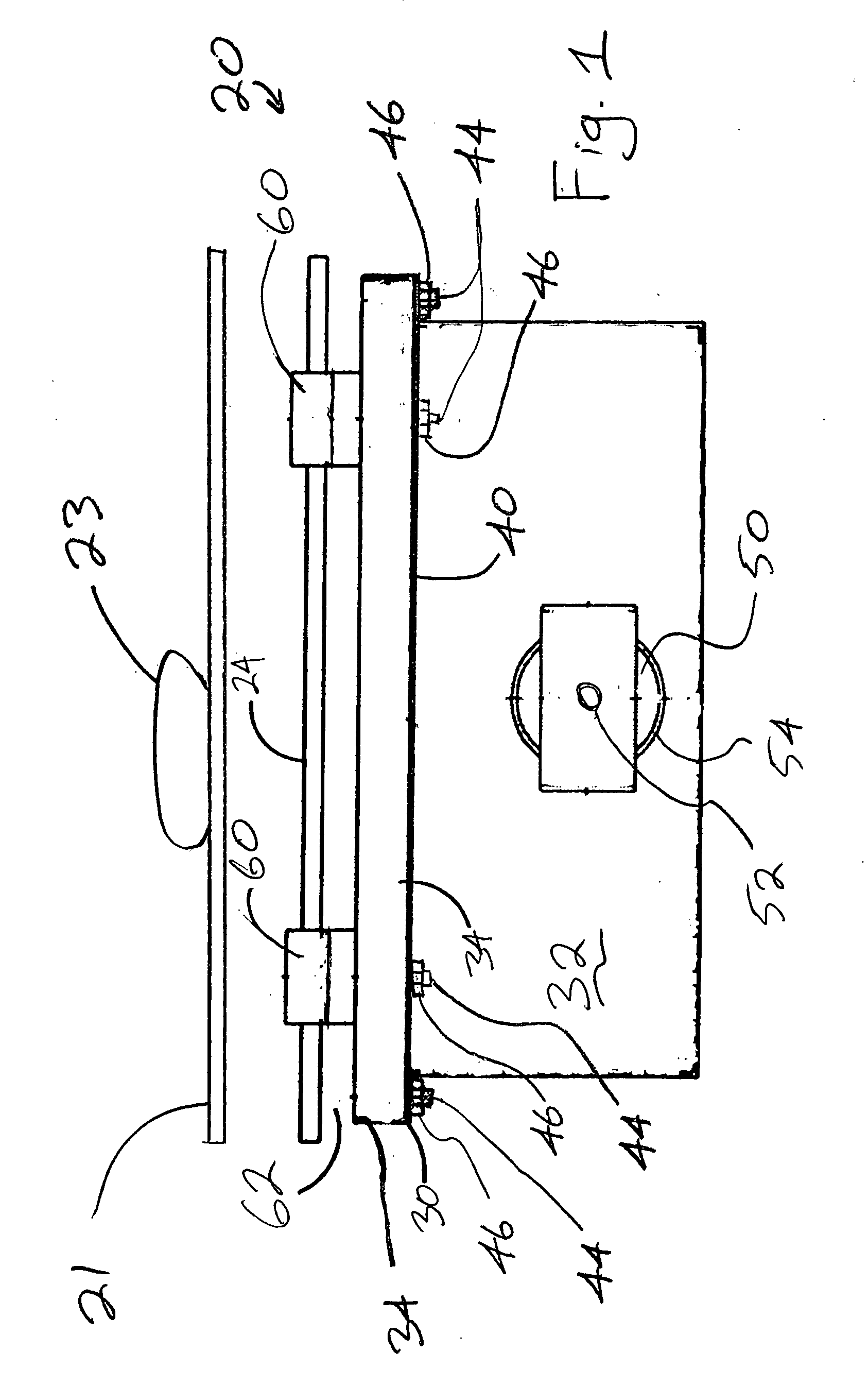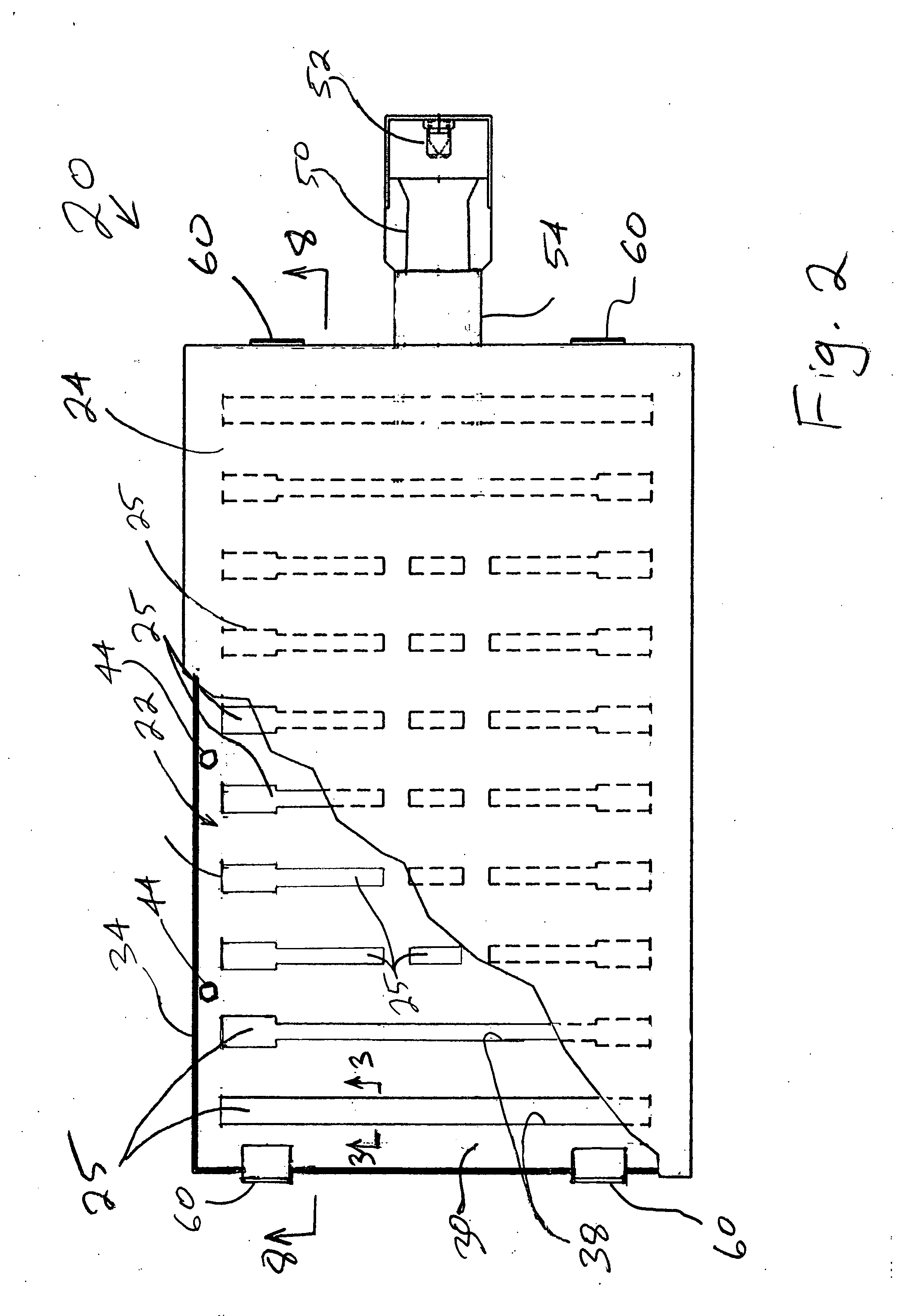Radiant burner
a technology of infrared burner and radiant, which is applied in the direction of capillary burner, combustion type, lighting and heating apparatus, etc. it can solve the problems of limited life, limited diameter of wire from which the screen is woven, and limit the strength and resistance to thermal fatigue. , to achieve the effect of restricting flashback, reducing the amount of heat that reaches the plenum, and being durabl
- Summary
- Abstract
- Description
- Claims
- Application Information
AI Technical Summary
Benefits of technology
Problems solved by technology
Method used
Image
Examples
Embodiment Construction
[0044] Referring now in greater detail to the drawings, in which like numerals refer to like parts throughout the several views, FIGS. 1-8 illustrate features of an infrared radiant burner unit 20 for generating infrared radiant energy by burning a gaseous fuel, in accordance with an exemplary embodiment of the present invention. Very generally described, and as can be understood from FIGS. 1-3, the burner unit 20 operates by burning the gaseous fuel so that combustion, which is schematically represented as flames by the series of vertical arrows in FIG. 3, emanates from / is proximate an outer surface of a burner element (e.g., burner assembly 22) and is typically at least partially within a gap between the burner assembly and an infrared radiant energy emitter 24. The vertical arrows in FIG. 3 are schematic in nature because, for example, the flames of the combustion are typically in a bed-like arrangement that is in close proximity to the outer surface of the burner assembly 22 dur...
PUM
 Login to View More
Login to View More Abstract
Description
Claims
Application Information
 Login to View More
Login to View More - R&D
- Intellectual Property
- Life Sciences
- Materials
- Tech Scout
- Unparalleled Data Quality
- Higher Quality Content
- 60% Fewer Hallucinations
Browse by: Latest US Patents, China's latest patents, Technical Efficacy Thesaurus, Application Domain, Technology Topic, Popular Technical Reports.
© 2025 PatSnap. All rights reserved.Legal|Privacy policy|Modern Slavery Act Transparency Statement|Sitemap|About US| Contact US: help@patsnap.com



